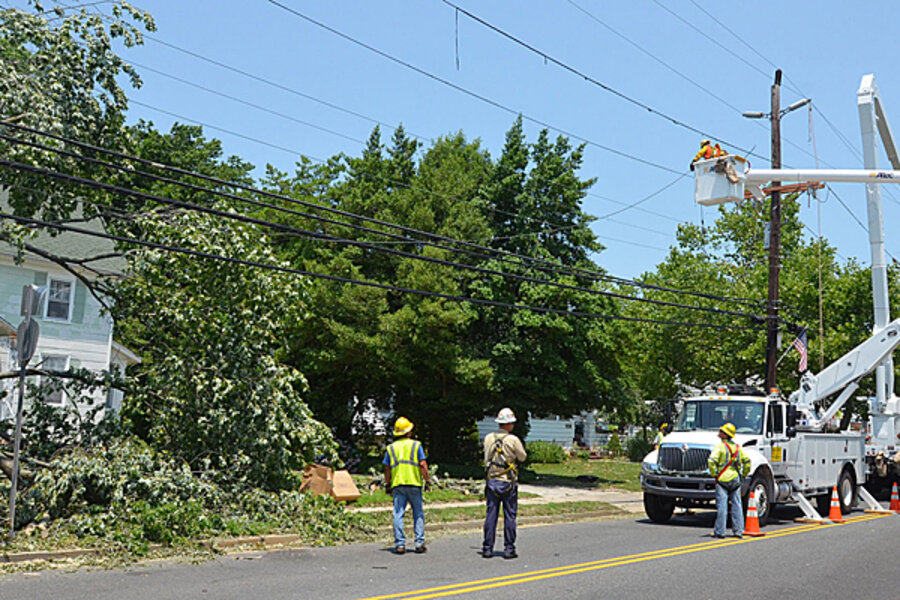Mid-Atlantic residents, still without power, don headlamps, skirt fallen trees
Loading...
| Baltimore
Home generators. Outdoor gas grills. Converters that allow you to plug your refrigerator into a running car. Really, really long extension cords, stretched to neighbors who still have electricity.
Also headlamps, which allow you to walk around a house after dark without holding a heavy flashlight in your hand or lighting a dangerous candle.
“It’s very weird to walk around with those lights on your head,” says Carole Schaefer, who lives in a currently current-free house in north Baltimore’s Roland Park neighborhood with her husband and two sons. “We look like aliens.”
These are among the many work-arounds that stressed mid-Atlantic residents are using to deal with the powerless aftermath of ferocious storms that swept through the region like a scythe on Friday.
As of Monday morning, almost 2 million homes from New Jersey to North Carolina and west to Illinois were without power, according to an Associated Press tally. Meanwhile, temperatures continued to land close to the 100-degree mark, with the high in the Baltimore-Washington area predicted at 92 degrees F. on Monday, rising to 98 by Thursday.
Some areas of the region were regaining normality, with power restored and stoplights working again. But in Washington, federal officials gave workers the option of staying home. Main roads such as Virginia’s Georgetown Pike remained blocked. In Maryland, at least 400 stoplights remained out. The damage was so severe in Roland Park that it appeared power would not be reappearing for days.
Spotting a reporter photographing tree damage, one resident emerged from her running Lexus to inquire whether he would be able to do anything about the old elm now lying on her neighbor’s house. Told he would not, she scooted back into the air conditioning of her parked car. She was using the engine to recharge her phone, she said. (She declined an offer to speak on the record, given the un-green methods she was using. But in her defense, people are getting desperate.)
At least 17 deaths have been blamed on Friday’s unusual storm and its aftermath. Virginia alone suffered six deaths from falling trees and other weather-related incidents.
To those affected by the storm, it seemed to have been a hurricane that struck without warning. Meteorologists said that in fact, it was a “derecho” (Spanish for “straight”), a fast-moving wall of high winds driven in front of fierce thunderstorm cells.
Typically, derechos are long-lived, highly destructive storms. They can be accompanied by downbursts that flatten areas of trees, making it appear as if a tornado passed through the area.
This may be what happened in areas of north Baltimore. Days after the storm, trees along I-83, an interstate used daily by thousands of commuters into and out of the city, still hung dangerously over the sides of the road, as if swatted down by giants.
Local officials of power company BGE would only say that it was unlikely electricity would come back until later in the week. “The majority will be restored by Thursday or Friday, but for some it will take longer,” Rob Gould, a BGE spokesman, told the Baltimore Sun.
Convoys of bucket trucks from New Jersey and points north were traveling south over the weekend to help clean up the damage. More than 1,000 out-of-state workers had arrived by Monday, according to BGE. Maryland Gov. Martin O’Malley (D), well aware of the anger building in the state, vowed to push BGE and other local power companies to work as hard as possible.
“No one will have his boot further up Pepco’s and BGE’s backsides than I will,” said Governor O’Malley on Sunday.






